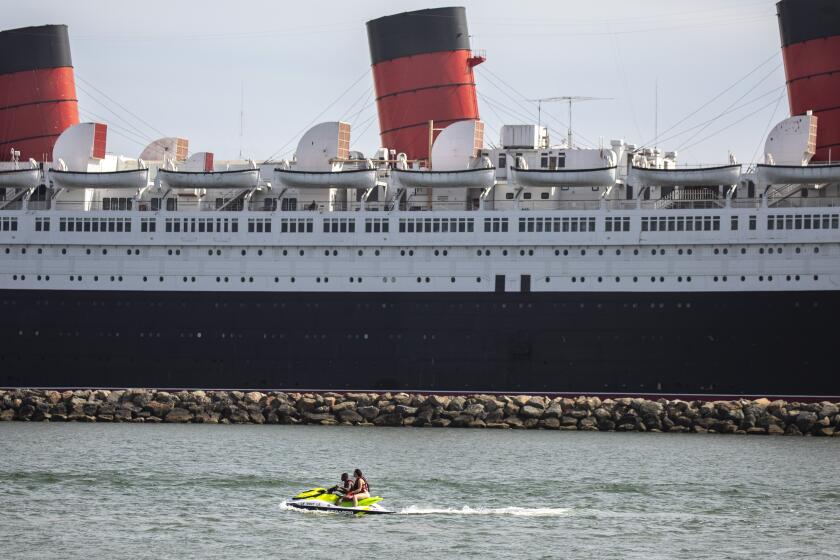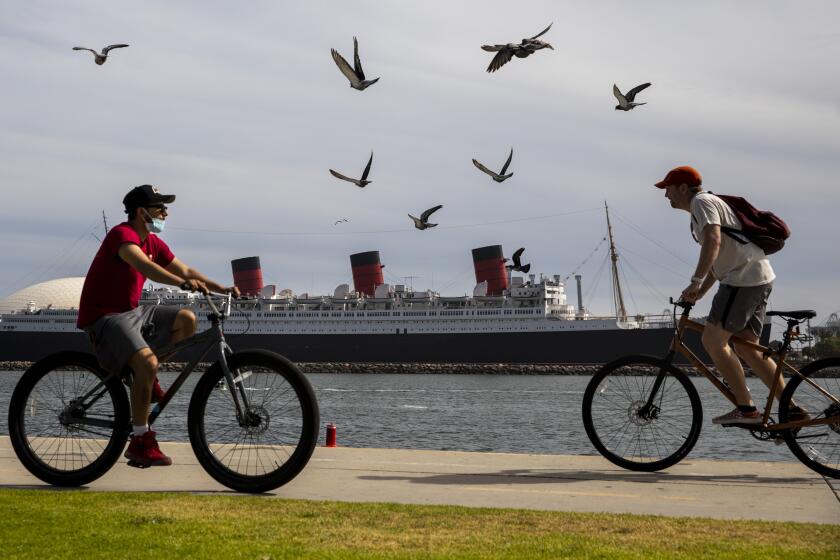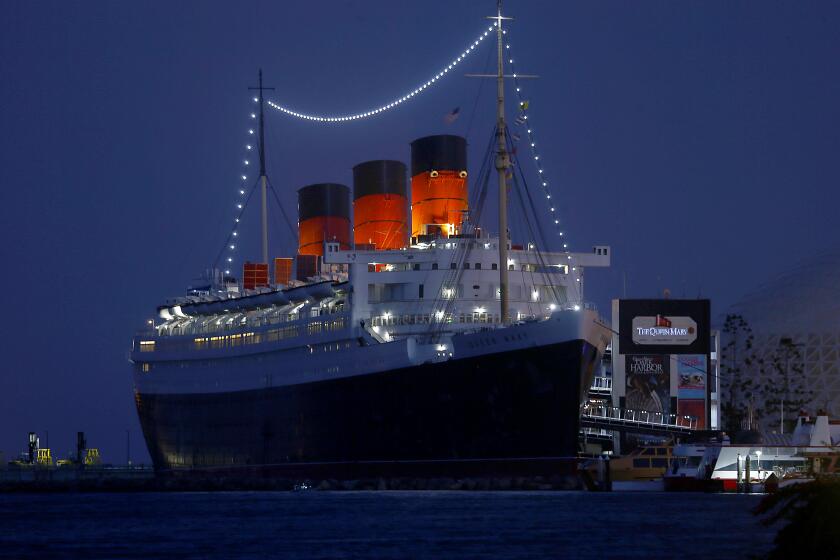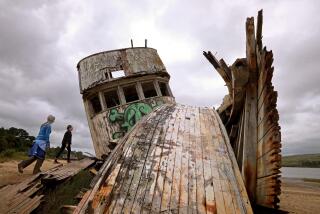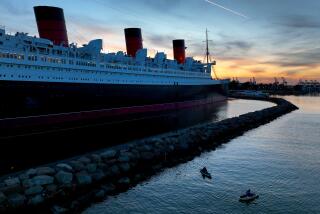Will these Queen Mary relics find new homes, or get sold for scrap?
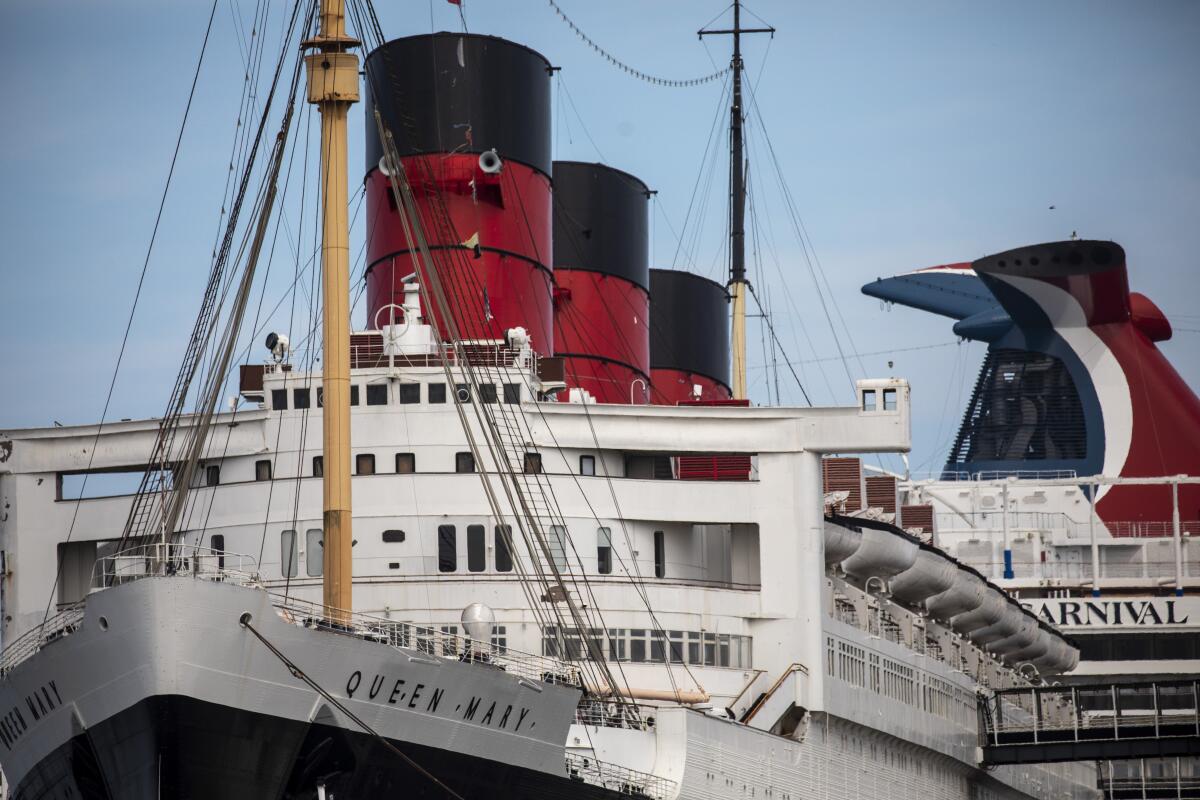
- Share via
Aaron McDowell, a security guard in Stockton who considers himself an amateur historian, recently put his skills to work by helping to restore a Vietnam War-era mine sweeper, the Lucid.
His next project may be a bit more hands-on and challenging.
McDowell has lodged a bid to take possession of a lifeboat from the aging Queen Mary in Long Beach so he can restore the six-ton craft in his landlocked Central Valley backyard.
“The Queen Mary is not just a part of Long Beach or British history,” he said. “She’s a beacon to the whole world as a cultural artifact.”
McDowell is among eight bidders who have offered to take one or more of the 20 lifeboats that the city of Long Beach has removed from the 86-year-old ocean liner-turned tourist attraction and floating hotel. The bidders are not required put up any money, but they have to prove to the city that they have the finances and ability to take possession and restore the lifeboats.
A structural study determined that the lifeboats were putting too much strain on the frame of the ship, prompting the city to seek bidders willing to save the lifeboats from ending up in landfills or scrap yards.
Long Beach is seeking bidders interested in buying 1930s lifeboats that were removed from the Queen Mary as part of a $5-million repair project.
But the lifeboats may not get a second life, according to a group of historians and preservationists who worry that the city has imposed too many conditions and too short a bidding period to save all the lifeboats. They fear most of the boats will be junked or sold for scrap metal.
“This is history that is going to be destroyed or end up in a landfill,” said Michael Rohrer, corporate secretary for QMI Restore the Queen, a nonprofit that is dedicated to raising money to restore the ship. “It’s sad.”
A spokesperson for the city of Long Beach said the city will be flexible, within reason, on how much time bidders will be given to take possession of the boats.
The lifeboat debate is the latest chapter in the ship’s 55-year history in Long Beach, where the 1,019-foot-long ship has been docked, drawing 1.6 million visitors a year before it closed in 2020 because of the pandemic. But the ship has also been the subject of numerous disputes among city officials and preservationists over how to repair and restore it, how much to spend and who should oversee the work.
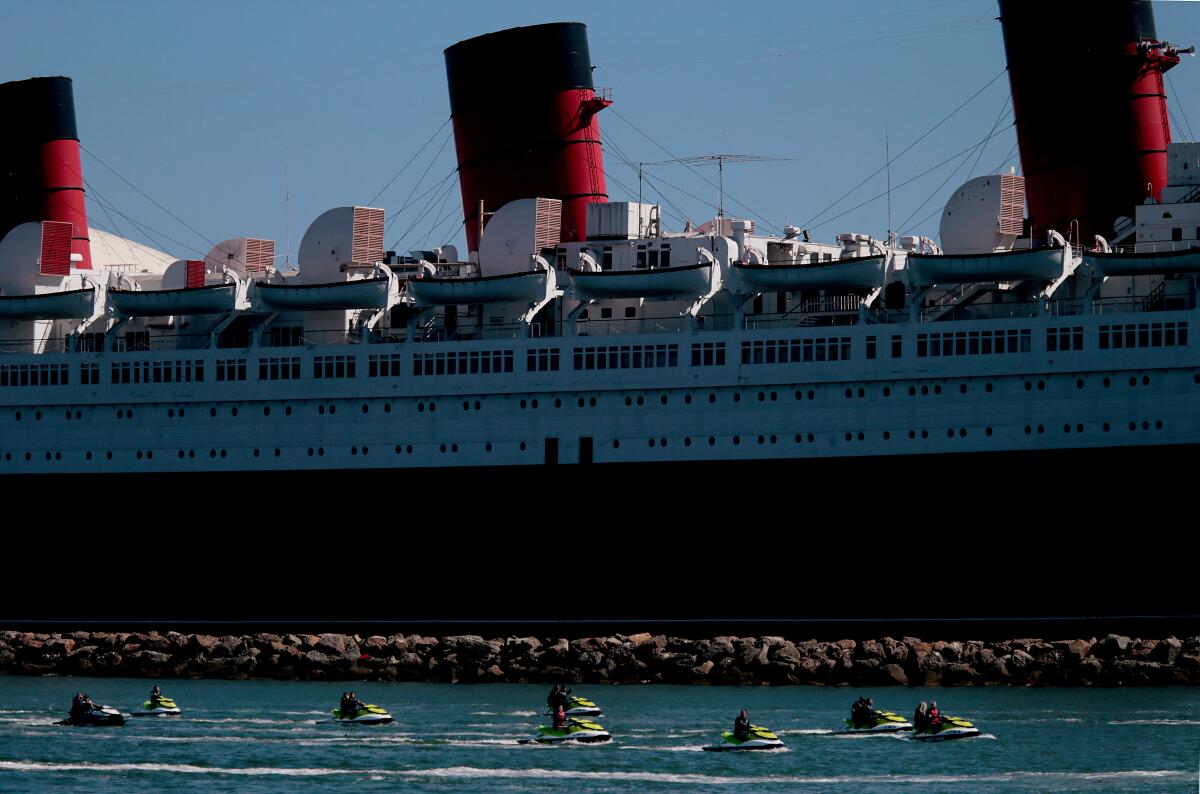
Long Beach — which has owned the Queen Mary since it sailed into the dock in 1967 — took control of the ship in June after the company that previously held the lease to operate it, Eagle Hospitality Trust, filed for bankruptcy protection in January and agreed to surrender its lease agreement.
Over the last five decades, a number of concessionaires have operated and maintained the ship as a floating hotel and tourist attraction, with mixed results. A 2017 study said as much as $289 million worth of renovations and upgrades were needed to keep parts of the ship from flooding. Since taking over the ship, the city has allocated $5.5 million to make the repairs needed to reopen the ship to the public.
Preserving the aging ocean liner for the next 25 years could cost $175 million, but sinking or dismantling it could cost even more.
A study found that the 22 lifeboats hanging from davits on the deck needed to be removed. The city plans to keep only two of the original lifeboats on the ship, with the rest being offered in a bidding process to preservationists, historians and museums to be restored and preserved.
The bidders must show they have the financial means to transport the boats from the ship site, restore them and sign a waiver, releasing the city from liability for the lead-based paint on the boats. One of the lifeboats is 30 feet long; the rest are 36 feet long and weigh about 12,000 pounds.
Most of the lifeboats were not originally on the Queen Mary when it sailed its maiden voyage in 1936 but were salvaged over the years from the Mauretania and Queen Elizabeth, according to historians.
Long Beach opened the bidding process Feb. 17 and is giving potential bidders until March 25 to submit offers.
If not enough bids are filed to take all of the lifeboats by March 25, city spokesman Johnny Vallejo said, “we will further evaluate next steps.”
“We are hopeful to find great homes for these historical lifeboats,” he added.
The Queen Mary in Long Beach needs $23 million in immediate repairs to keep it from potentially capsizing, according to court documents and inspection reports.
Rohrer and the QMI group say the city should have set aside more time — perhaps as much as six months — to find preservationists around the world interested in the lifeboats.
“The timeline is so short, there is not a legitimate amount of time for them,” Rohrer said. “They are setting it up for failure.”
One of the bidders, a real estate developer in Nova Scotia, Canada, had considered taking one of the lifeboats and installing it outside of a new housing development in the province on a street named after ship builder Samuel Cunard, whose company Cunard Lines built the Queen Mary. In an interview, a spokesperson for the developer said the company has decided against pursuing the bid because transporting the boat to Canada would be too expensive.
Thomas Thacker, the owner of Long Beach Maintenance & Repair, who describes himself as a history buff, submitted a bid for one boat, saying in an interview that he plans to restore it and keep it on display at his auto repair shop. Thacker said he has the tools to do the work but still needs a crane to lift the boat onto a flatbed truck.
Eagle Hospitality Trust’s Chapter 11 filing could be the start of a wave of bankruptcies for the industry. The company operates the Queen Mary in Long Beach.
He said he hopes all of the boats find a permanent home.
“I would like to see them all restored to their original condition,” he said. “I would not like to see them disposed of.”
McDowell, who describes himself as an amateur historian, has a personal reason for wanting to preserve a lifeboat from the Queen Mary: When the ship was used to transport Allied troops during World War II, his grandfather was one of its passengers.
“These lifeboats are a piece of history,” McDowell said. “I get it that they’re made of metal and can be scrapped. It doesn’t mean I would like it.”
More to Read
Inside the business of entertainment
The Wide Shot brings you news, analysis and insights on everything from streaming wars to production — and what it all means for the future.
You may occasionally receive promotional content from the Los Angeles Times.
